Navigating the PTM Landscape
"Education is the key to unlock the golden door of freedom." George Washington

Elevate PTMs: Where Feedback
Meets Creativity in Education
Uncover how PTMs can strengthen educational partnerships and leave a lasting impact on students, parents, and teachers.
Introduction: Navigating the PTM Landscape
Parent-Teacher Meetings (PTMs) serve as a crucial bridge between educators and parents, fostering open communication and collaboration for a child’s educational growth. In this article, we’ll delve into the world of PTMs, exploring their full form, innovative board decoration ideas, inspiring quotations, effective feedback writing tips, and the essential elements that make PTMs successful. Join us as we unravel the secrets to making PTMs a fruitful experience for all parties involved.
PTM Full Form Demystified
Starting with the basics, let’s uncover the “Full form of PTM”. PTM stands for “Parent-Teacher Meeting.” This forum provides parents and teachers with an opportunity to discuss a child’s progress, both academically and socially. It’s a platform where insights are shared, concerns are addressed, and strategies for improvement are formulated.
Why PTM is Important for Parents to Attend
Meetings between parents and teachers are super important. They help parents know how their kid is doing in school and how they can help them do even better. Here’s why these meetings are a big deal
Find Out How Your Kid is Doing
When you go to these meetings, teachers tell you how your child is doing in different things like reading, math, and how they get along with others. It helps you understand what your kid is good at and where they might need some extra help.
Talk Openly
These meetings are a chance for you to share your thoughts and ask questions about your child’s school life. It’s a two-way chat where both parents and teachers can help each other help the child.
Meet Other Parents
You can meet other parents too! It’s a good way to share stories, tips, and make friends who are going through similar things with their kids.
Know What Happens at School
You get a peek into what happens in the classroom. It helps you understand what your child goes through every day and what they might need help with.
Catch Problems Early
If there are any problems at school, like trouble learning or making friends, these meetings help spot them early. That way, parents and teachers can team up to fix things before they become big issues.
Help Your Kid Better
With the info from these meetings, you can help your kid more at home. If they’re struggling in a subject, you can find ways to practice with them or find fun ways to learn.
Show You Care
Going to these meetings shows your kid that school is important to you. It makes them feel supported and encourages them to do their best.
Insight into Child’s Progress
PTMs offer a comprehensive understanding of a child’s academic, social, and emotional development. Teachers provide insights into a student’s strengths, areas needing improvement, and overall progress. This knowledge empowers parents to support their child more effectively at home.
Supporting Learning at Home
With a better understanding of a child’s academic strengths and weaknesses, parents can provide more targeted support at home. This could involve additional practice, guidance, or enrichment activities tailored to the child’s needs.
So, these meetings aren’t just something you have to do—they’re a big deal for making sure your kid gets the best support both at school and at home.
In conclusion, Parent-Teacher Meetings are an invaluable aspect of a child’s educational journey. They facilitate collaboration, understanding, and support between parents and educators, all aimed at nurturing a child’s growth and success. By actively participating in PTMs, parents play a crucial role in enhancing their child’s educational experience.
Crafting a Welcoming Atmosphere: PTM Board Decoration
The Warm Welcome
To set the stage for a successful PTM, it’s essential to create a warm and inviting atmosphere. One way to achieve this is through thoughtful board decoration. The bulletin boards at the school entrance can be adorned with vibrant artwork, showcasing the students’ creativity and achievements. This not only impresses parents but also creates a positive ambiance.
Theme-Based Decor
Consider adopting a theme for your PTM board decoration. Whether it’s a seasonal theme or one that aligns with the curriculum, thematic decor can engage parents and students alike. For instance, during a science-themed PTM, decorate the boards with fascinating scientific facts and experiments conducted by students.
Decorating the board for Parent-Teacher Meetings (PTMs) adds a welcoming touch to the event. Here are some ideas to help you create an engaging PTM board decoration –
The Warm Welcome
To set the stage for a successful PTM, it’s essential to create a warm and inviting atmosphere. One way to achieve this is through thoughtful board decoration. The bulletin boards at the school entrance can be adorned with vibrant artwork, showcasing the students’ creativity and achievements. This not only impresses parents but also creates a positive ambiance.
Theme-Based Decor
Consider adopting a theme for your PTM board decoration. Whether it’s a seasonal theme or one that aligns with the curriculum, thematic decor can engage parents and students alike. For instance, during a science-themed PTM, decorate the boards with fascinating scientific facts and experiments conducted by students.
Decorating the board for Parent-Teacher Meetings (PTMs) adds a welcoming touch to the event. Here are some ideas to help you create an engaging PTM board decoration –
- Theme-Based Decor: Choose a theme that aligns with the PTM’s purpose or the curriculum. For example, you can go with a science theme and display student experiments and facts for a science-focused PTM.
- Student Showcases: Feature artwork, projects, and achievements by students. This showcases their talents and provides a sense of pride.
- Interactive Displays: Create interactive elements like a question board related to the subjects being discussed during the PTM. Parents and students can participate and learn together.
- Informational Posters: Include informative posters about school policies, important dates, and educational resources. This keeps parents informed and engaged.
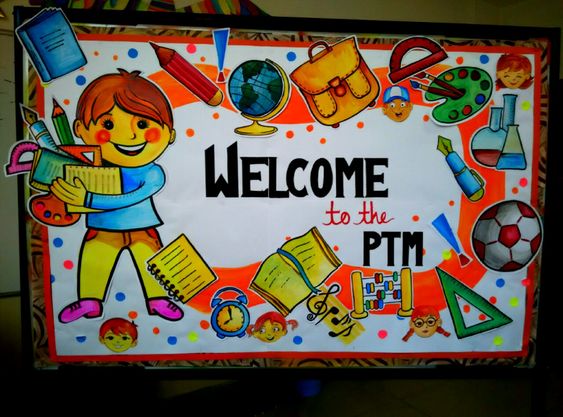
- Student Quotes: Display motivational quotes or statements from students about their learning experiences. This personal touch adds warmth to the decor.
- Bulletin Board Borders: Use colorful borders and attractive fonts to make the display visually appealing. Ensure that it’s well-organized and not cluttered.
- Student Portfolios: Showcase student portfolios or folders containing their best work. Parents can browse through these during their visit.
- Interactive Whiteboard: If available, use an interactive whiteboard to display dynamic content like videos or presentations related to the curriculum.
Remember to keep the decoration relevant to the PTM’s purpose and to update it regularly to reflect current achievements and topics. A well-decorated board can enhance the overall PTM experience for parents and students.
“The beautiful thing about learning is that no one can take it away from you.” – B.B. King
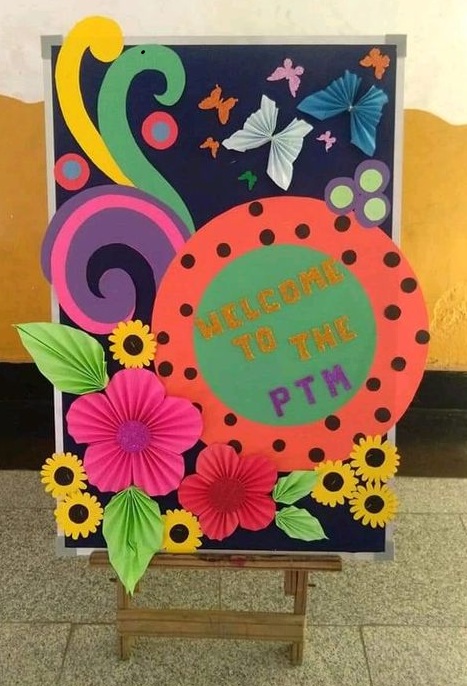
Inspiring Quotations for PTM
“Quotations have the power to inspire and uplift. Incorporate motivational quotes into your PTM presentations and written materials. They can serve as a source of encouragement for both parents and students. Such quotes remind everyone of the enduring value of education and the collaborative effort required for a child’s growth”
“Good communication between parents and teachers is essential for the success of our children.”
“Parents and teachers working together create a strong foundation for student success.”
“As parents and teachers, we share a common goal of helping our children reach their full potential.”
Essential Elements for a Successful PTM
Welcoming – The Significance of a Warm Welcome of Parents
Upon their arrival at the PTM venue, parents should experience a genuine and warm welcome. This initial interaction is the foundation upon which the entire PTM experience is built. Here’s why it matters:
1. Fostering a Positive Atmosphere
A warm welcome creates a positive atmosphere that puts parents at ease. It signals that their presence is valued and that the school is committed to open and friendly communication.
2. Setting Expectations
During this welcome phase, you can set clear expectations for the PTM. Parents should understand that the purpose extends beyond a cursory exchange of pleasantries; it’s an opportunity for substantive discussions.
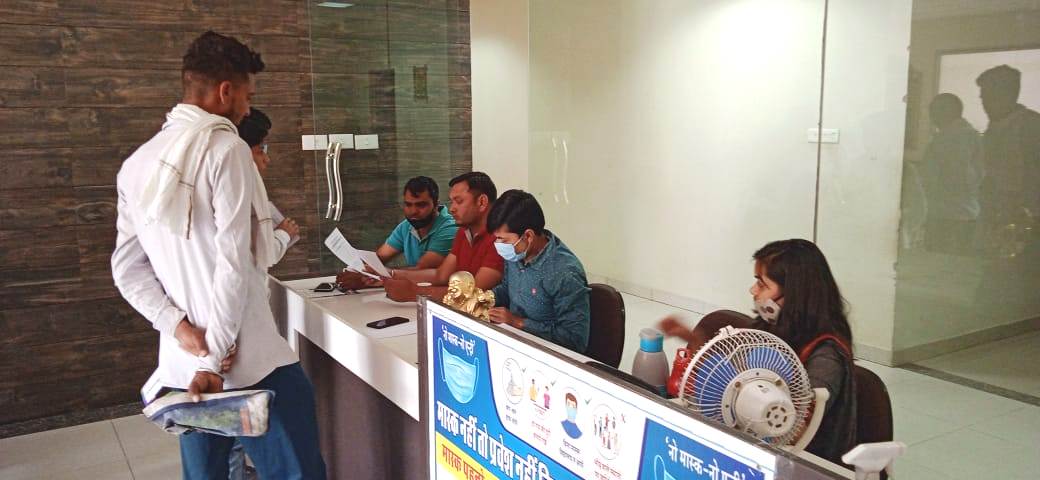

The PTM Format: A Valuable Tool
As part of this welcoming process, it’s highly beneficial to provide parents with a PTM format or agenda. This document serves as a roadmap for their PTM journey, and its importance cannot be overstated.
3. Meeting with Class Teachers
The format outlines the need for parents to meet with the class teachers. This serves the purpose of discussing the overall progress and conduct of their child in the class. It’s an opportunity for teachers to provide insights into the child’s academic journey and behavior within the class environment.
4. Interaction with Subject Teachers
Beyond class teachers, the PTM format also encourages parents to meet with subject teachers. This is particularly significant because it allows for more specialized discussions. Parents can gain insights into their child’s performance in specific subjects, identifying strengths and areas that may require additional attention.
5. Meeting with the Principal
Lastly, the format includes a slot for parents to meet with the Principal. This meeting holds paramount importance as it provides parents with an opportunity to discuss broader issues, school policies, and future plans. It’s a chance to voice concerns, seek clarifications, and engage in constructive dialogue with the school’s leadership.
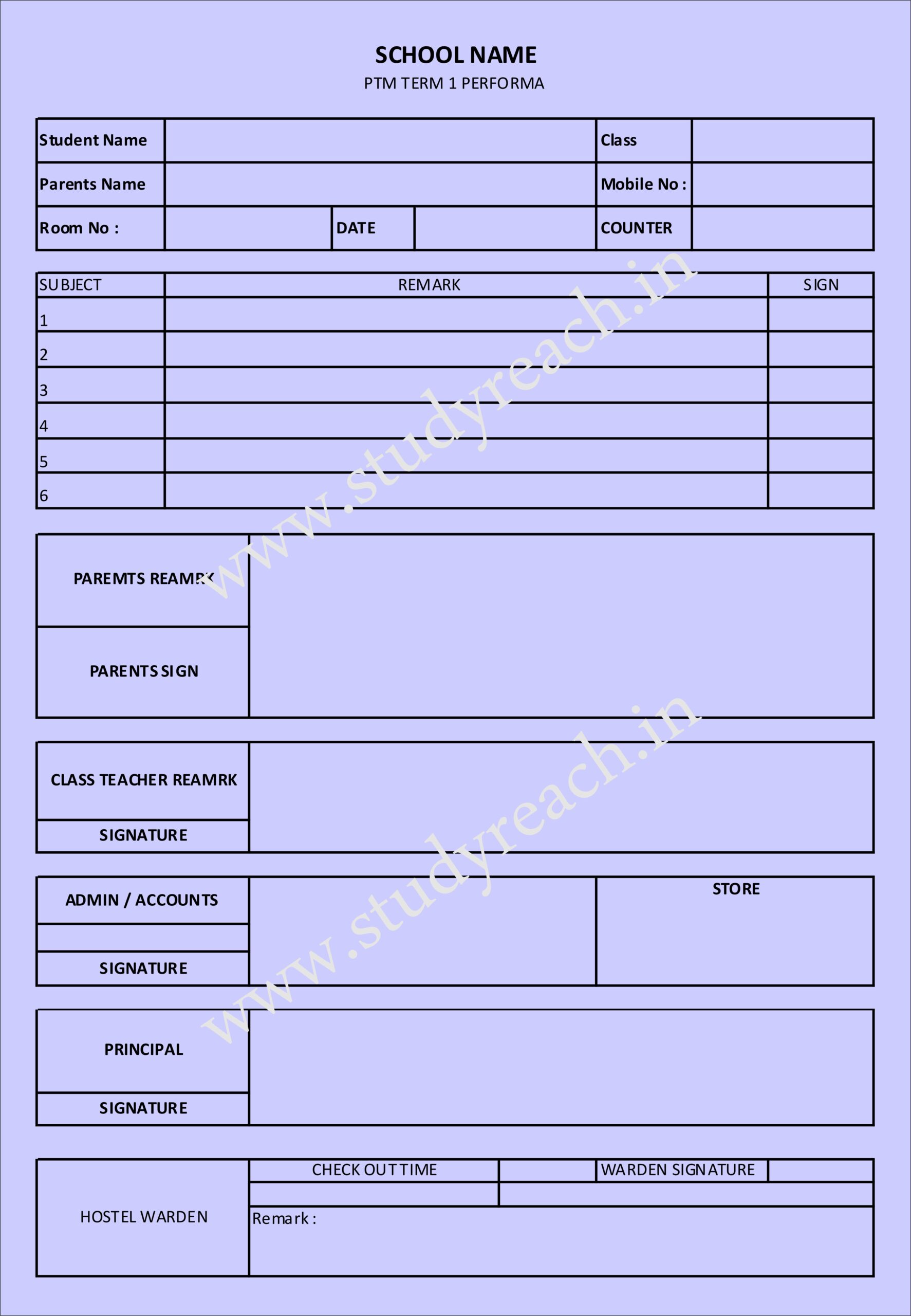
Tracking and Follow-Ups
One of the key benefits of the PTM format is its role in tracking discussions and ensuring follow-ups. Each meeting with a class teacher, subject teacher, or the Principal can be documented in the format. This documentation serves several purposes:
6. Ensuring Accountability
By having teachers and the Principal sign off on the PTM format, accountability is established. It ensures that discussions took place as planned and commitments were made.
7. Facilitating Follow-Ups
After the PTM, the format can be referred to for follow-up actions. If any specific actions or interventions were agreed upon during the meetings, the format acts as a reference point to track progress and ensure that these actions are implemented.
In essence, welcoming parents with a clear PTM format and encouraging them to meet with class teachers, subject teachers, and the Principal serves the purpose of fostering meaningful and comprehensive discussions about a child’s education. It empowers parents to gain a holistic view of their child’s progress, allows them to address specific concerns, and opens the door for collaboration between home and school to support the child’s growth and development.
Mastering the Art of PTM Feedback
Mastering the Art of PTM Feedback
Constructive Feedback Matters
Providing constructive feedback is a critical aspect of PTMs. It’s essential to strike a balance between highlighting a child’s strengths and addressing areas that need improvement. Be specific in your feedback to guide parents effectively.
Be Solution-Oriented
When discussing areas of improvement, always offer solutions or strategies that parents can implement at home to support their child’s development. A problem-solving approach fosters a sense of collaboration.
Attendance Records
Attendance must be filled by the class teachers for visitors. Accurate records help in assessing the level of parental involvement.
Gathering Feedback
Collect feedback from parents regarding their PTM experience. Their input can guide future improvements.

Recognizing Achievements – Inspiring Excellence
In the intricate tapestry of education, acknowledging and celebrating the achievements of students play a pivotal role. It is not merely a formality but a powerful tool that can propel students towards excellence and motivate them to persistently pursue their educational journey. One such avenue for recognition is the act of awarding prizes to the top three students in the class. This simple yet profound gesture goes beyond a mere pat on the back; it has far-reaching implications.
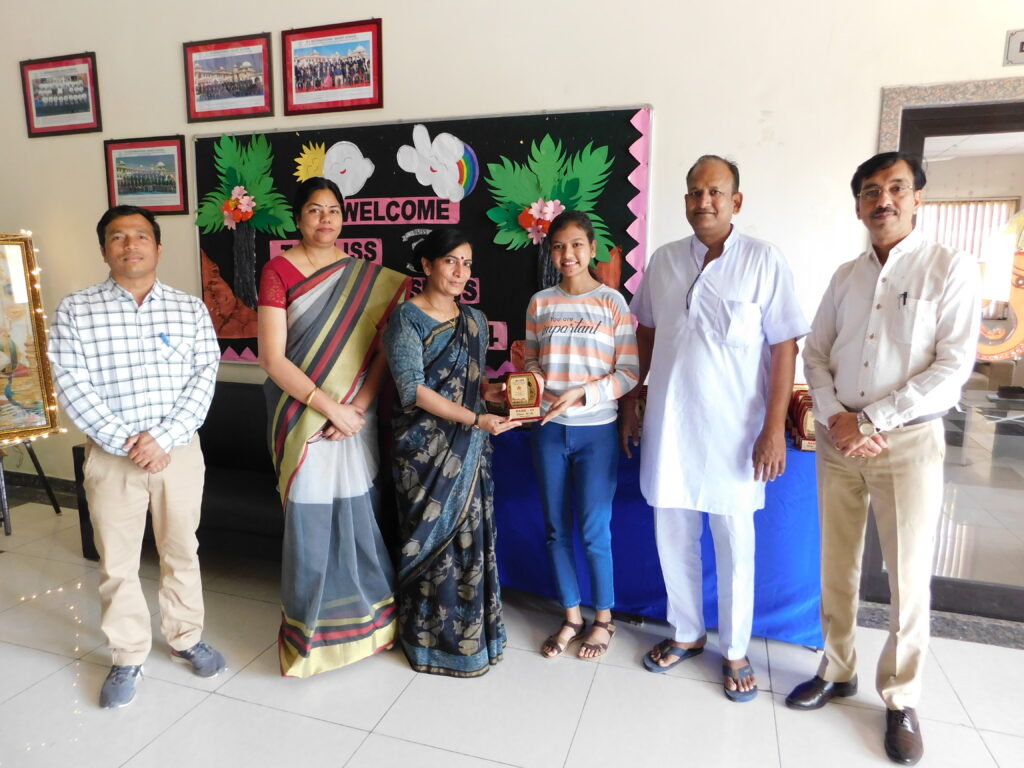
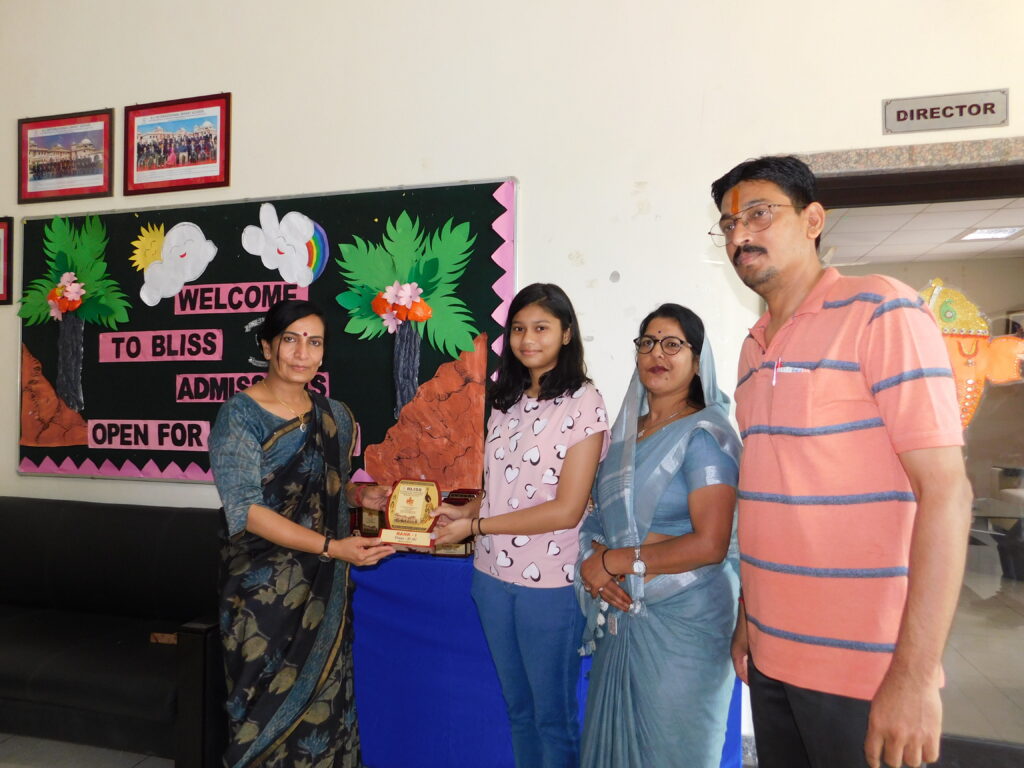
The Power of Recognition
Recognition is like sunlight to a budding plant. It provides nourishment, encouragement, and a reason to strive for higher goals. When top-performing students are recognized and rewarded, several significant outcomes emerge
Motivation to Excel
Awarding prizes to the top three students serves as a powerful motivator. It ignites a competitive spirit in students, encouraging them to push their boundaries and aim for academic excellence. Knowing that their hard work and dedication can lead to tangible rewards inspires them to perform at their best consistently.
Fostering Healthy Competition
Healthy competition is an essential aspect of any educational institution. It drives students to excel in their studies, but it also promotes a collaborative spirit. When students see their peers being recognized, it creates a positive competitive environment where everyone strives to improve.
Boosting Confidence
Recognition boosts students’ confidence in their abilities. When they receive a prize for their academic achievements, it reaffirms their belief in themselves and their potential. This enhanced self-confidence can have a cascading effect on their overall performance and attitude towards learning.
The Significance of Top Three Students
Awarding prizes to the top three students specifically is a deliberate choice. Here’s why it holds significance:
Inclusivity
Recognizing the top three students ensures that multiple students receive accolades. This inclusivity prevents demotivation among those who may not be the absolute top but are still high achievers. It sends the message that excellence comes in various forms.
Encouraging Consistency
Acknowledging the top three students emphasizes the importance of consistent performance. It encourages students not only to excel in a single instance but to maintain their academic excellence over time. This dedication to excellence is a valuable life skill.
Setting Role Models
The top three students become role models for their peers. Their success stories inspire others to emulate their dedication, work ethic, and study habits. This creates a positive academic culture within the school, where students support and uplift one another.

The Ripple Effect
The act of awarding prizes to the top three students is not confined to the moment of recognition. Its impact ripples through the entire educational ecosystem:
Parental Involvement
Parents often take pride in their child’s achievements. When their child is among the top three, it fosters a sense of involvement and engagement in their child’s education. They become active participants in their child’s academic journey.
In conclusion
Awarding prizes to the top three students in the class is not just a ceremony; it’s a catalyst for growth and excellence. It motivates, inspires, and fosters a culture of achievement within the school. By acknowledging the hard work and dedication of students, we not only celebrate their achievements but also lay the foundation for a brighter educational future.
Creating Memories- Capturing the Essence of PTMs
Amidst the discussions, acknowledgments, and valuable insights that Parent-Teacher Meetings (PTMs) offer, there exists a beautiful opportunity to create lasting memories. A dedicated space, often referred to as the “selfie counter,” can be set up to encourage parents and students to capture these cherished moments. This seemingly small addition to the PTM experience has a profound impact.
The selfie counter is more than just a photo opportunity; it’s a testament to the connections formed during PTMs. Here’s why it holds significance.
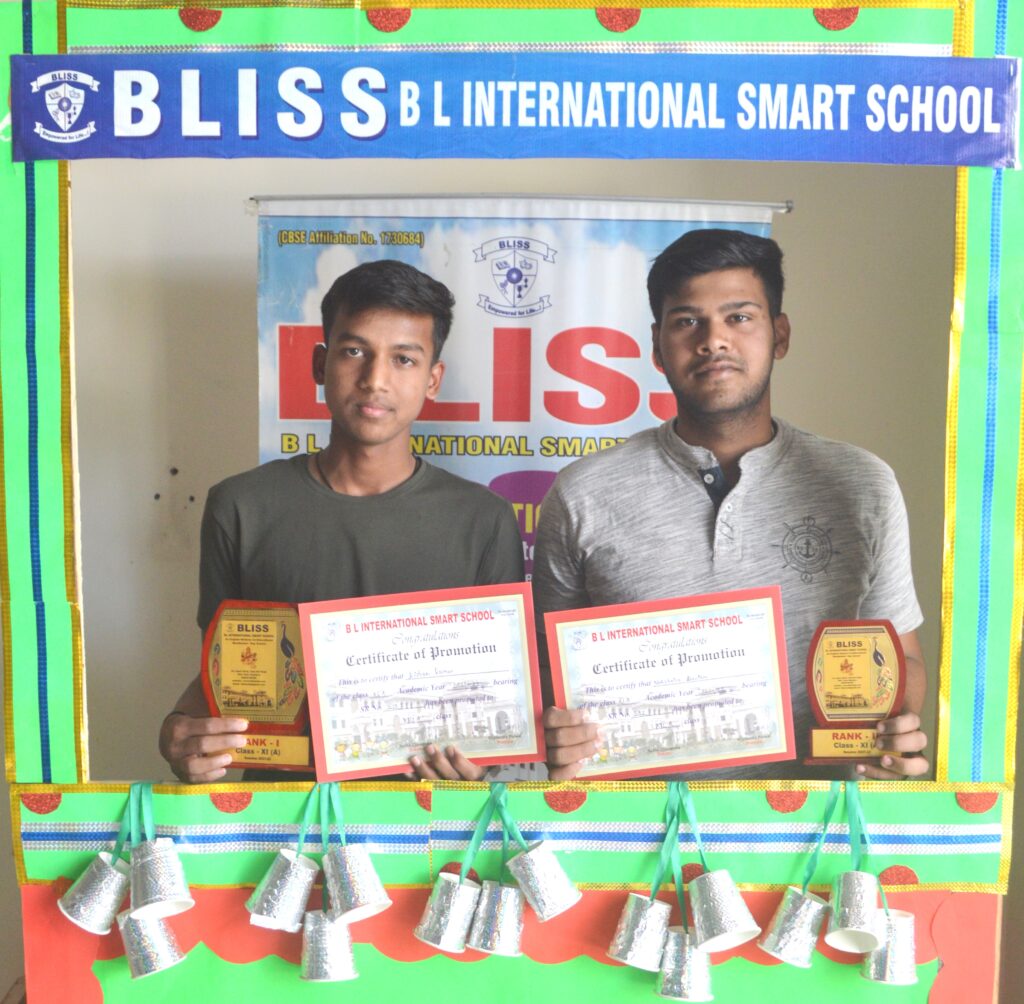
Final Formalities
Collect the visit form from parents at the reception as they depart. This ensures that all necessary documentation is completed.
Conclusion: Building Stronger Educational Partnerships
In conclusion, PTMs are more than just meetings; they are opportunities to strengthen educational partnerships and create a supportive learning environment. By understanding the full form of PTM, embracing creative board decoration, drawing inspiration from powerful quotations, mastering the art of feedback, and implementing essential elements for a successful PTM, we can make PTMs more enriching and effective.
============== FAQ ==============
What is the primary purpose of a PTM?
The primary purpose of a PTM (Parent-Teacher Meeting) is to facilitate communication between parents and teachers, discuss a child’s academic and social progress, and collaborate on strategies for improvement.
How can I make PTM board decoration engaging?
To make PTM board decoration engaging, consider themes, use vibrant visuals, showcase student achievements, and align the decor with the meeting’s purpose or curriculum.
Why are inspirational quotations important in PTMs?
Inspirational quotations add motivation and positivity to PTMs, inspiring both parents and students to stay committed to the educational journey.
How to write PTM Feedback?
When giving feedback during a PTM, focus on being constructive, specific, and solution-oriented. Address the personal and academic development of your ward cover both strengths and areas for improvement. Give your actual suggestions.
How can PTMs strengthen the parent-teacher-student partnership?
PTMs strengthen the partnership by promoting open dialogue, emphasizing collective responsibility, and fostering a collaborative approach to a child’s education.

